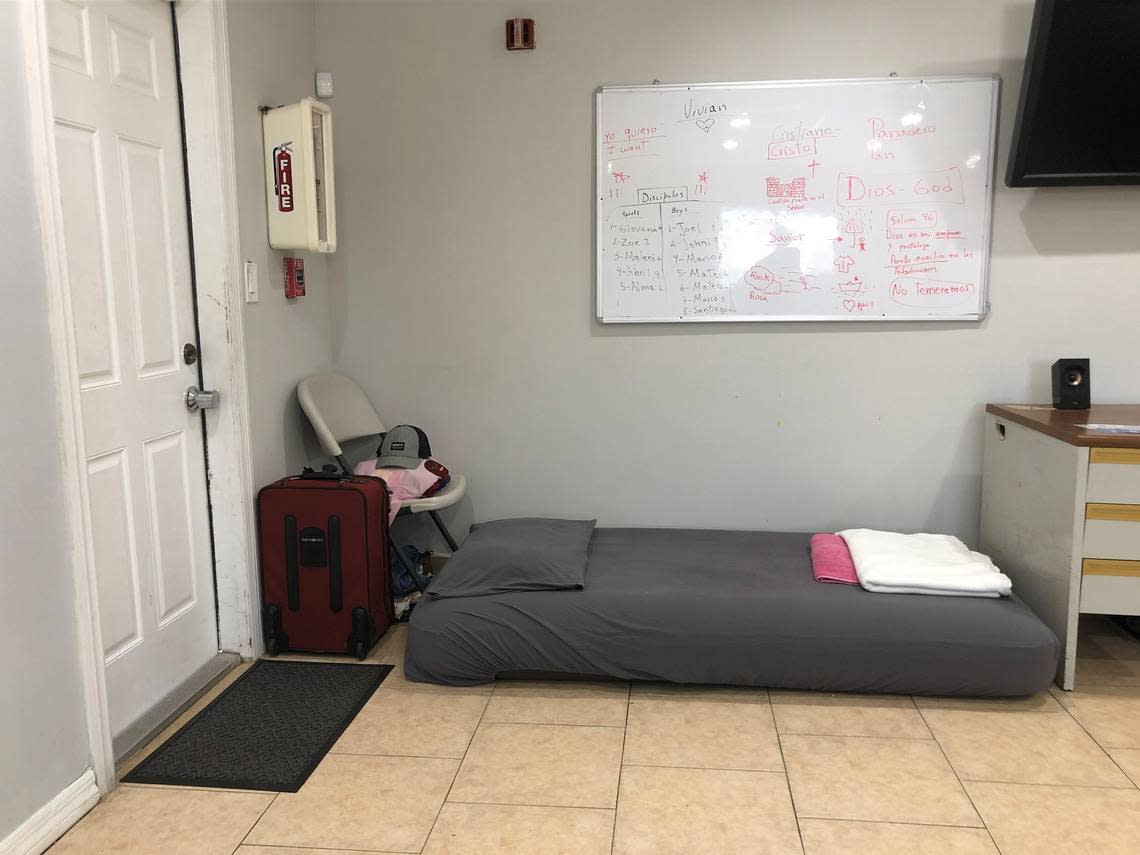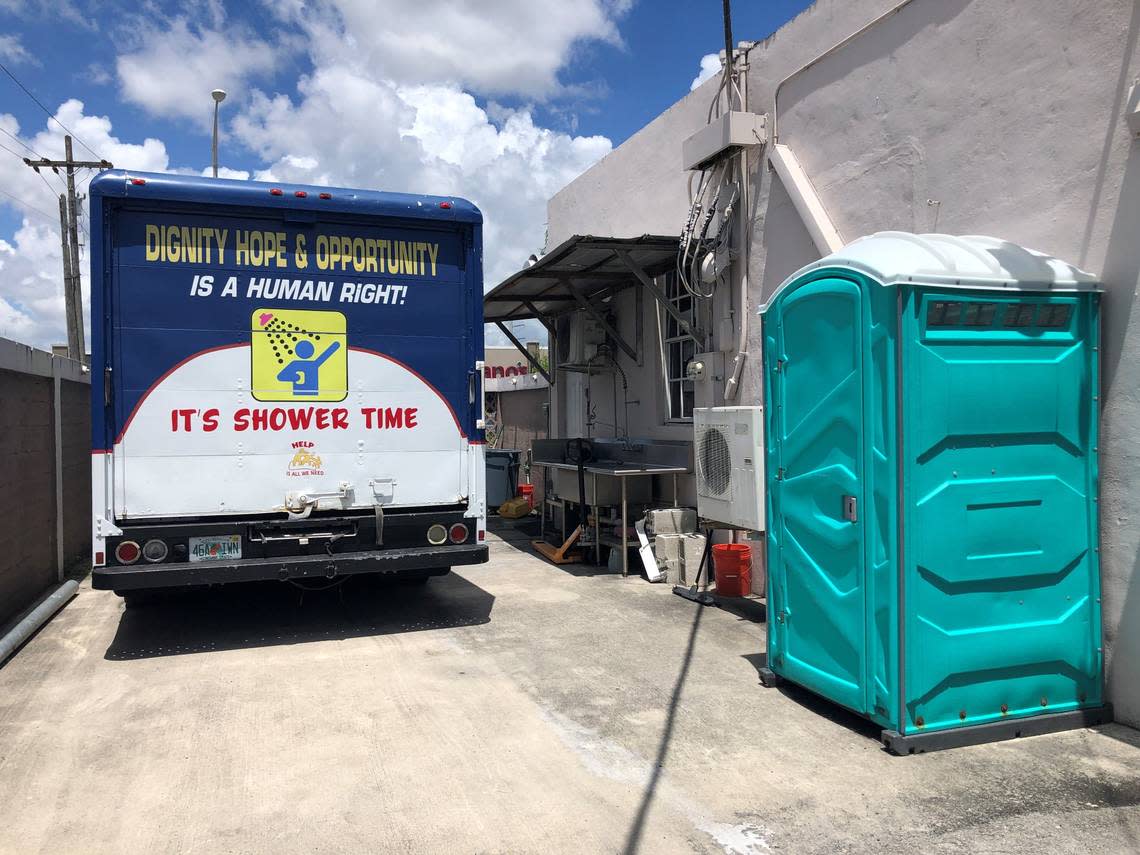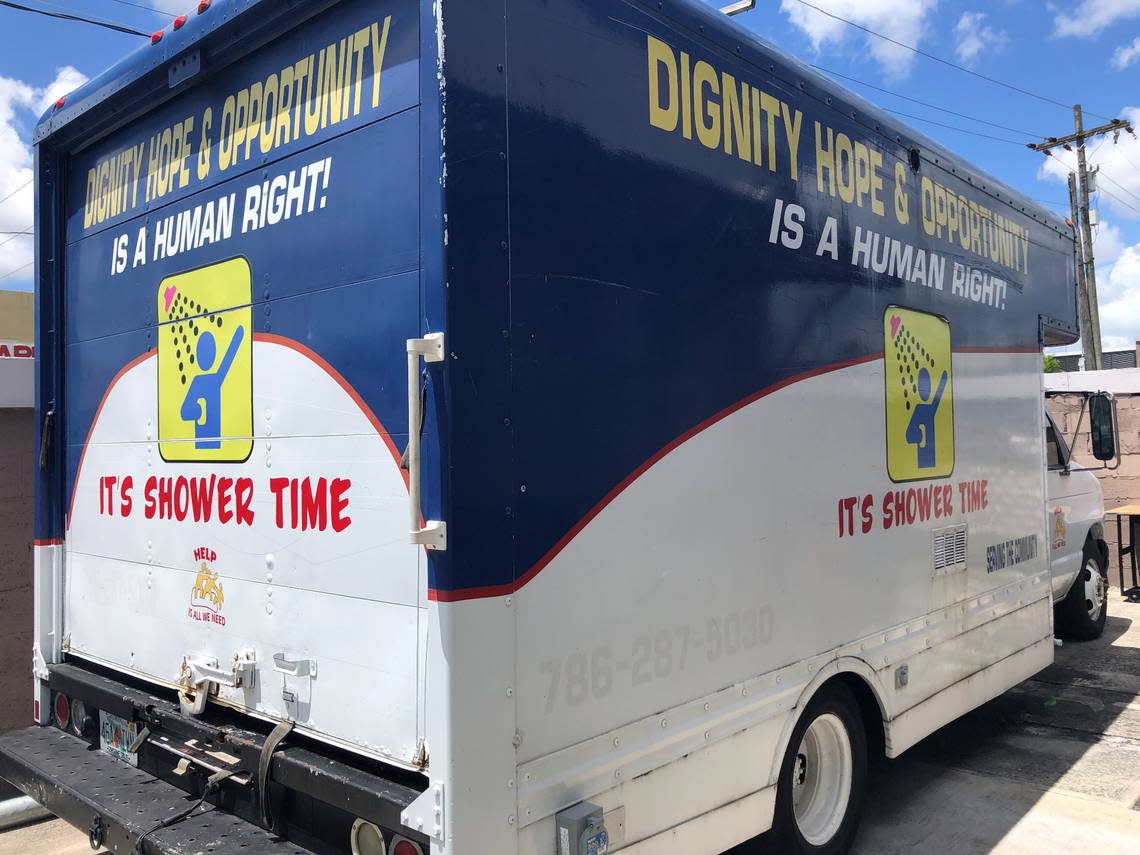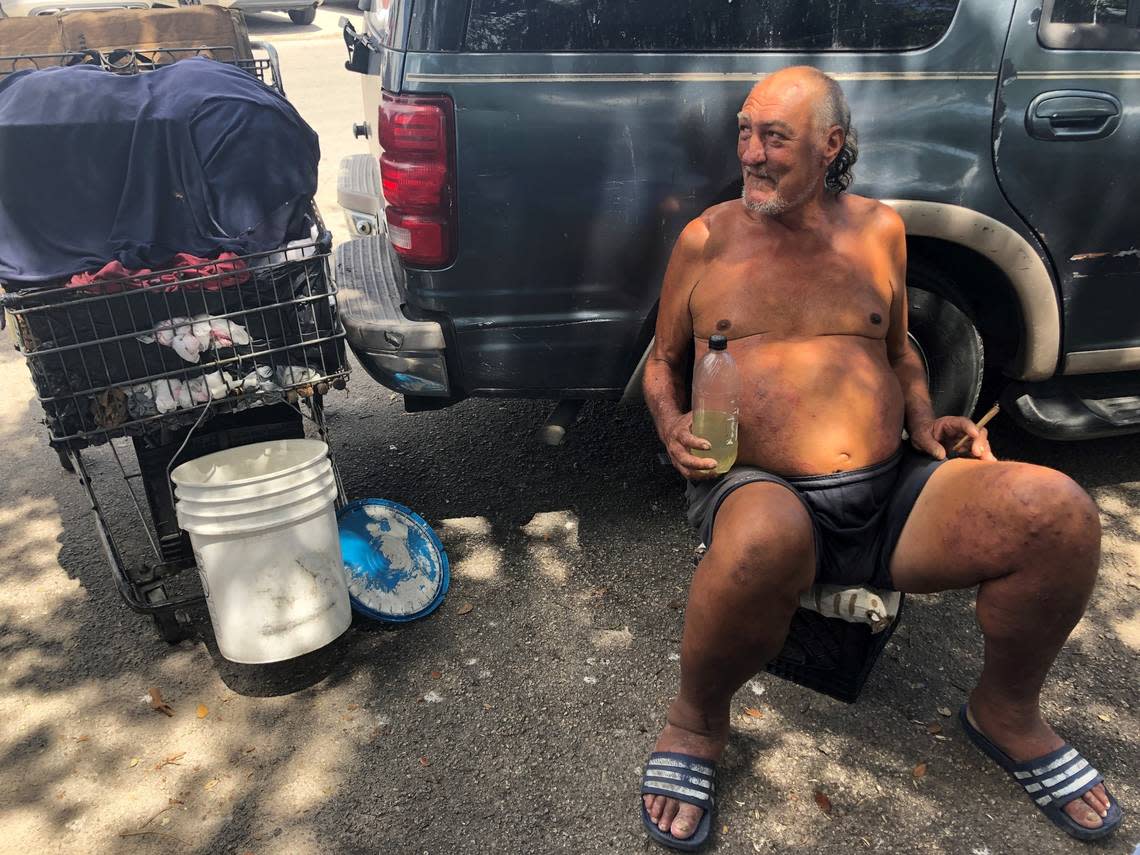‘I would like to have a place to live again.’ Hialeah sees increase in homelessness
Liseth Guerra has been living on the street for six years, since her first husband died and she couldn’t continue paying for the apartment where they lived. The 57=year-old is disabled due to a “nervous disorder,” for which she receives a pension of $850 — not enough to pay for rent.
Guerra’s story is not unique in Hialeah. The increase in the number of people living on the streets led the City Council to approve outreach services for the homeless through an emergency grant.
“Homelessness is more than not having a place to sleep,” said María Ruiz, interim director of the city’s Grants Department. “It is about mental illness, addiction, family disintegration, personal failure, loss of employment, the breakup of key relationships/”
José De Jesús, a 67-year-old from Nicaragua, is Guerra’s partner. His mind wanders and it is difficult for him to remember what his life was like before living on the streets. He worked as a general welder and now he has “small jobs that have allowed him to survive.”
Cuban-born Guerra recounted that “on two occasions I have applied to Plan 8 (Section 8 housing), but I have not been selected. Sometimes I spend the night at my mother’s home, who lives in an apartment of that plan, but I can’t stay for more than a week.”
The city has four affordable housing programs, including Section 8, but none are open for new applications.
“We don’t have new applications because we can’t offer more housing,” said Julio Ponce, director of the Hialeah Housing Authority.
Every four or five years there is an application period for the voucher program. Some 50,000 people apply and of these, around 2,500 are approved, Ponce said.
$241,000 for the social program
The Hialeah City Council approved the use of $241,553 for “the creation of homeless outreach services to ensure the city’s homeless are provided with engagement and emergency shelter,” according to the ordinance.
“We have a significant number of people who have become homeless. ...We have to assist them, refer them and if necessary, place them in a hotel until a shelter is available,” Ruiz said.
The city will have two employees serving as Grants Department outreach workers to identify and engage the homeless. To secure shelters for qualified Hialeah residents, the grant office contacted staff from Miami-Dade County’s sister program, the Homeless Trust, who said there were a few shelter providers in the area with the capacity to welcome new people in need of housing.
Miami considering plan to move homeless people to camp on island in Biscayne Bay
Ruiz assured that the emergency budget will include money for shelter beds, as well as explore “ways to secure rapid rehousing funds so that individual experiences of homelessness can be as brief as humanly possible.”
How many homeless people are there in Hialeah?
Hialeah does not have statistics on the number of homeless people in the city, according to the City Clerk’s office. Ruiz told el Nuevo Herald that since she assumed the interim position in April, his office has assisted eight households.
“Our goal now would be to keep data on the number and demographics of the people we serve,” she said.
Councilman Bryan Calvo said that “the problem is that we don’t know the number, and we don’t know the causes either. We have to identify the needs of these people. I get the impression that many of these people are on the streets because of rent increases.”
Displacements, evictions in Hialeah: Human tragedy of Miami-Dade’s housing crisis persists
During a recent City Council meeting on the funds to help people, officials anecdotally outlined the problem. They said that the new level of homelessness has “never been seen before in the city.”
“I have some reports from the neighborhoods of people sleeping on the grass, between two houses,” Mayor Esteban Bovo Jr. said. “Although many people don’t report it, it is happening in our communities.”
Illegal multifamily homes in Hialeah? Home affordability crisis worsens worrisome trend
Ismare Monreal, Bovo’s chief of staff, told el Nuevo Herald that the number of police reports of people sleeping on the city streets has increased.
“We are seeing homeless people in parks, in shopping malls. We had never seen this. When we receive police reports, we forward them to the Homeless Trust and Iglesia Rescate (Rescue Church) as well as other no-profit organizations,” she said.
Calvo has noticed “the problem in the last six months, particularly at night. I have seen them sleeping on bus benches, in tents between bushes, in different areas of the city – along Okeechobee (Road), in the west, on 49th Street, in shopping malls...”
Church helps homeless people
The Iglesia Rescate on East Fourth Avenue in Hialeah and established more than 30 years ago, has been working as an “improvised” community center for eight years due to the needs of the homeless on the city streets, said Pastor David Monduy.
In 2014, he started a program called “Casa Rescate” (Rescue House) for people who became addicts and were displaced to the streets.
“Ninety percent of homeless people are alcoholics. Alcohol robs work discipline and human dignity,” Monduy said.
The effort got more than 14 people off the streets, according to the spiritual leader.
The pastor said a new surge of homelessness has come with the recent arrivals of Cuban, Nicaraguan and Haitian migrants who don’t have a place to sleep. “The city cannot change addicted people, but it can help those who are arriving and have nowhere to live,” he said.
Iglesia Rescate has become a refuge for three “functional” men, as the executive pastor Moisés García, in charge of the administrative and operational area of the religious institution, calls them.
Garcia explained that for the first time, Iglesia Rescate is housing homeless people on the premises. It does it because “they have shown an intention to recover themselves.”
Edison, Lázaro and Wilberto have 90 days to spend the night in the church’s facilities. During that time, the pastoral community expects them to get back into society, García said.

A month and a half ago, a children’s classroom inside the church was refurbished as a temporary shelter to house the three men. They are allowed to stay on the premises from 6 p.m. to 8 a.m. while looking for a place to live.

Creating shelters is ruled out
Councilman Calvo said the issue has not reached the point of the city needing shelters to house the homeless. Buthe has expresssed concern about homeless people sleeping in front of businesses.
“This is a problem that must be tackled,” Calvo said. “It must be corrected from the human point of view, but also from the sanitary point of view because it could create areas of violence or drugs, as is already the case in other cities in the country.”
Monduy noted that homeless people are most often seen around hardware stores on Palm Avenue and along streets in the eastern part of the city. Between West Third Avenue and 23rd Street, a group of homeless people frequently meet in an area with sheds and where a church usually takes its “shower truck” for them to clean up twice a week.

In the area is Arturo Báez, a 59-year-old Cuban man, affected by sunburn and mosquito bites. He says he has lived on the street since he was 11 .
“I was the oldest of three siblings and there was not enough food for everyone,” he said. “I was on the street in Cuba, then in Costa Rica when I emigrated with my family — my sisters, mother and grandmother. I have been on the streets of Hialeah since we moved to this country in 1982.”
The man reported that the greatest risk of living on the street is that “they want to take your little money. The devil wants to take advantage of you, but I am tired. I have nowhere to lay my head. If you feel bad, there is no one to call. I am alone against the demons.”

Báez assured that he is fine, surviving on “small jobs” throwing out garbage and helping to load sheds. But “I am already old and tired,” he said.
Florida is third in most homeless people
The state of Florida (27,487) ranks third in the number of homeless, after California (161,582) and New York (91,271), according to the U.S. Interagency Council on Homelessness, a federal agency focused on preventing and ending homelessness in the nation.
The five Florida counties with the highest number of homeless people are Miami-Dade, with 3,224 people; Broward, 2,561; Pinellas, 2,307; Orange, 1,162, and Duval, 1,137, according to 2021 data from the Florida Department of Health.
Recently, Marcia Fudge, Secretary of the U.S. Housing and Urban Development visited Miami. “I think we overlook homelessness in this country,” she said, noting that high rent and mortgage rates contribute to homelessness.
“In the greatest nation in the world, almost 500,000 people sleep on the streets … every night. It’s a travesty,” she said.
Guerra, the homeless Hialeah woman, said the hardest thing for her is nighttime.
“I sleep with one eye open. I would like to have a place to live again.”
